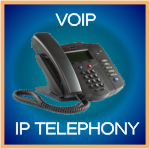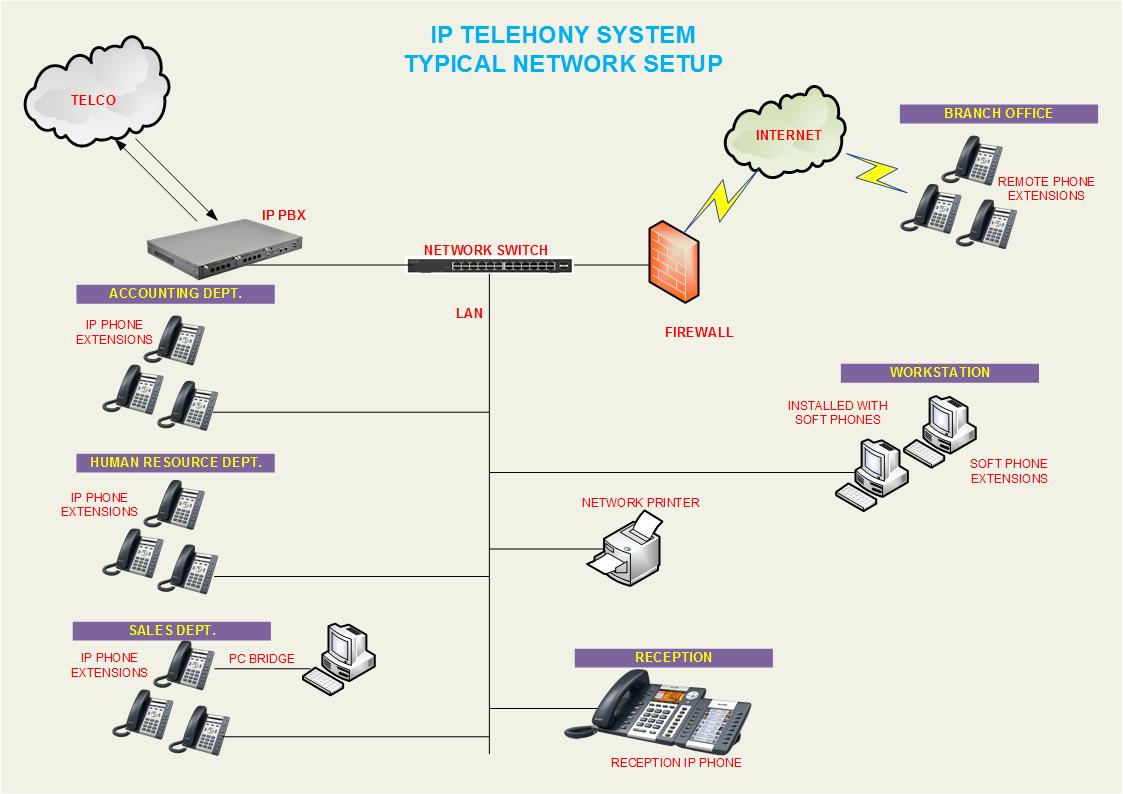
In the advent of computer and rapid technology collaboration the IP Telephony or VoIP
has capitalized the global business communication. The highly integrated and cost-effective
telephony solution breaks the barrier of adapting expensive telephone system in business.
Through this technology small, medium to enterprise businesses can now easily communicate
globally.
The IP Advantages
The biggest difference between a traditional PBX system and an IP PBX system (aside from usi ng the internet rather than the traditional phone network) is that calls can be routed to many different types of extensions while still providing the same experience for callers. For instance, a VoIP-based system can be run to IP phones, which look like traditional hard-wired handsets, as well as desktop-based softphones that allow calls to be answered, recorded and logged through the computer. Internal extensions route the calls to each different type of location while still providing the same experience for end users.
ng the internet rather than the traditional phone network) is that calls can be routed to many different types of extensions while still providing the same experience for callers. For instance, a VoIP-based system can be run to IP phones, which look like traditional hard-wired handsets, as well as desktop-based softphones that allow calls to be answered, recorded and logged through the computer. Internal extensions route the calls to each different type of location while still providing the same experience for end users.
IP systems also allow users to forward extensions to locations off property like home phones, mobile phones and computers. Depending on the system, they may not require much more than an Internet connection and password to provide telecommuters with the same access that employees who operate from inside the building have.
IP PBX systems can change the way that businesses operate by providing unlimited access to telecommunications systems from anywhere in the world. Customers receive a seamless experience when calling, and employees have the flexibility that our digital world requires. Overall, the upfront expenditure to implement an IP PBX is much less than traditional, hardwired systems because Internet-based systems generally require far less hardware. IP PBX systems also tend to be inclusive, and features like call waiting, three-way calling, caller ID and more are standard
IP TELEPHONY FEATURES:
- Supported codecs: ADPCM, G.711(A-Law & u-Law), G.722, G.723.1(pass through), G.726, G.728, G.729, GSM, iLBC(optional) among others.
- SIP and IAX2 support
- Incoming and outgoing routes with support for dial pattern matching
- Support for paging and intercom
- Web-based operator panel
- DISA(Direct Inward System Access)
- Call detail record(CDR) report
- Billing and consumption report
- Distributed DialPlan with dundi
- Call recording, Call parking, call queues, Voicemail, Conference
- Echo canceller
- Callback support
- Flexible and configuration IVR
- Support for PIN sets
- Support for time conditions
- VOIP provider configuration
- Support for follow-me
- Support for ring groups
- Support for video-phones
- Channel usage reports
- Mail server with multi-domain support
- Based in postfix for high email volume
- Remote SMTP Module
- Web based email client
- Support for quotas
- Antispam support
- Support for mail relay
- Email list management
FAX
- Fax to email application
- Fax visor with downloaded PDFs
- Can be integrated with Winprint Hylafax
- Fax send through Web Interface
- Fax to email customization
- Access control for fax clients
Central
- System resources monitor
- Backup Restore Validation
- Network configurator
- Heartbeat module
- Configurable server date, time and timezone
- Backup/restore support via web
- Server shutdown from the web
- DHCP server for dynamic IP
- Access control to the interface based on ACL
